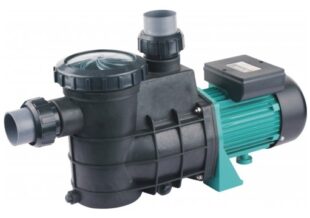A pump’s primary purpose is to oxygenate/freshen water. Ponds that are regularly maintained will not develop toxic gas smells like methane, ammonia, and hydrogen sulphide (spoiled eggs gas). Anaerobic bacteria, microorganisms that live in areas where there is no oxygen, create these toxic elements.
 Your pump should be run in the early hours of the morning. The water’s oxygen level is at its lowest point at this time, as algae and plants can only make oxygen from sunlight. All living things in the pond, including bacteria, algae, and plants, use oxygen at night. This causes the dissolved oxygen level in the water to decrease as the night progresses. Your pump will be most needed if your pond has a lot of fish.
Your pump should be run in the early hours of the morning. The water’s oxygen level is at its lowest point at this time, as algae and plants can only make oxygen from sunlight. All living things in the pond, including bacteria, algae, and plants, use oxygen at night. This causes the dissolved oxygen level in the water to decrease as the night progresses. Your pump will be most needed if your pond has a lot of fish.
Your biggest problem with turning off your pump is oxygen depletion within your filter. This is a bad thing. This is the bacteria that causes poor water quality.
Algae, a green photosynthetic organism, can be seen on the surface of ponds during warmer months. Algae depends on sunlight to grow food. It has similar needs to plants. An algae problem is likely to develop if your pond gets more than two hours of sunlight per day in summer. To avoid water stagnation or unwanted algae buildup, keep your pond pumps on at all times.
 The nitrifying bacteria must be at an appropriate level to convert the ammonia from the fish to nitrates if the pond is large. Only conditions can keep the number of nitrifying microbes constant. The supply of oxygen and food (ammonia), must also be constant. The nitrifying bacteria that you have turned off will return and can reproduce again in days, or even weeks. If you have many fish in your pond, it is important that the pump runs continuously.
The nitrifying bacteria must be at an appropriate level to convert the ammonia from the fish to nitrates if the pond is large. Only conditions can keep the number of nitrifying microbes constant. The supply of oxygen and food (ammonia), must also be constant. The nitrifying bacteria that you have turned off will return and can reproduce again in days, or even weeks. If you have many fish in your pond, it is important that the pump runs continuously.
It’s absolutely vital that the pump is working 24/7 .
This ensures that the water in your pond is distributed evenly and passes through a filter. It is important to filter all water from your pond each hour. This is the best way to ensure that your water is clean and healthy.
You should ensure that the pond pump you choose has the right attributes for your pond. For example, the pump should have the appropriate amount of gallons per an hour (gph). This will allow your filters to do their job properly. For best results, ponds should have all of their water volume flushed through their filter system every two hours.
